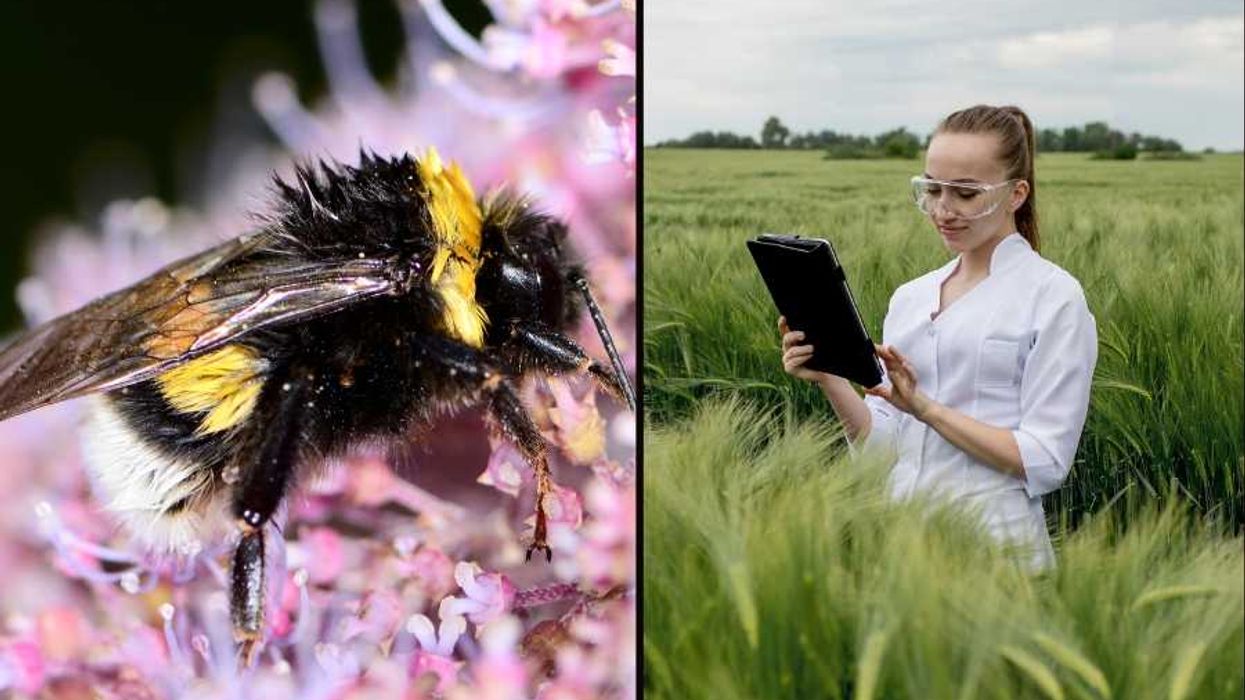In case you hadn’t noticed, it’s officially fall: Trees are turning red and orange, giant boxes of pumpkins have appeared outside every grocery store, and households are prepping for visiting relatives. Meanwhile, in the animal world, one of the greatest annual migrations is underway. Far above us, hordes of monarch butterflies are winging it south to Mexico. Or, at least, they’re supposed to be.
The delicate little orange and black monarch butterfly might not seem like a likely candidate for a long-distance marathoner, but every year, adult monarch butterflies throughout North America travel southward to their winter homes — a journey that can be more than 3,000 miles long.
Different traveling monarch populations go to different places, but one popular spot is a small cluster of mountains in central Mexico. Special oyamel fir trees, also known as the sacred firs, grow there. Their branches provide the perfect microclimate for the butterflies to weather the cold — and they do so by the thousands.
[quote position="left" is_quote="true"]The longer the butterflies stay, the fewer flowers there are to feed on and the closer that first, deadly winter frost gets.[/quote]
The journey is so long that no single bug survives the trip. Instead, the butterflies lay eggs as they go, and it might take four or five generations to complete a cycle from Canada to Mexico and back again.
We’re still learning why and how so many of them ultimately complete their incredible journey, but this great migration has been happening since time immemorial — long enough for mountains to disappear and for the journey to imprint into the bugs’ very genes.
This year, however, the butterflies are running late.
By now, they should really be winging it across Texas, heading toward Mexico. But people as far north as Canada say they’re still spotting large clusters of the multicolored bugs hanging around. The little bugs don’t seem to want to go just yet. In fact, Journey North, a website that tracks the butterflies, says this is the latest migration they’ve ever seen.
What seems to be holding the bugs back is a combination of strong winds and unusually warm weather across nearly the entire United States. Warmer temperatures might make things seem more hospitable for those bugs lollygagging in Canada, but the extra heat might actually be setting the little bugs up for an unpleasant surprise down the road.
Darlene Burgess does evening monarch counts at Point Pelee National Park in Canada. “As nice as this is to see, I really wish I wouldn’t see it because they’re running out of time,” Burgess told the Associated Press. The longer the butterflies stay, the fewer flowers there are to feed on. And, the closer that first, deadly winter frost gets. “It’s really not good for them,” Burgess noted.
The unusually warm weather and its effect on wildlife may be a sign of things to come, thanks to climate change.
Monarch butterflies are not an endangered species, but dwindling food supplies and fragmented habitats do have some researchers worried. Many of the sacred firs have been razed to make room for avocado orchards, for instance.
Around the world, many flying insect species seem to be on the decline, a situation one ecologist called “very alarming.”
Still, there are things we can do to protect the species. Some conservation groups and government organizations have petitioned to get these butterflies federal protection. Mexico recently designated 140,000 acres of the special butterfly mountains as a protected area. At home, people can plant milkweed plants, join in citizen science tracking projects, and support reforestation efforts.
Nature’s clock runs very precisely at times. As climate change and human activity continue to affect the globe, we may see more weird effects like these lollygagging insects.
















 Otis knew before they did.
Otis knew before they did.